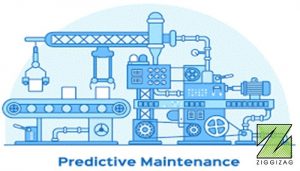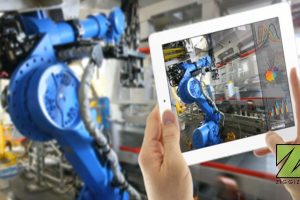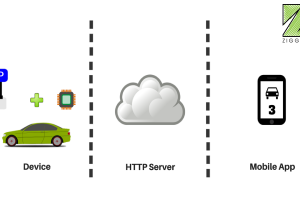The world of technology is emerging greatly. We have now become tech geeks. Imagine your machine telling you that my engine part needs wear and tear or repair. That will be a great technique, right? The machines need manual weekly check. In that case, the labors need to lubricate the machines, check its wear and tear and repair the destroyed part. But, using predictive maintenance techniques, the machine itself will you that which part of it needs repair. This technology is Predictive Maintenance.
Introduction
Predictive Maintenance is basically the strategy driven by predictive analysis. The solutions of predictive maintenance can be used for detecting failure patterns or anomalies. Predictive maintenance techniques can also be used in real life service for diagnosis of a disease, or inspection of body parts. We can say that predictive maintenance is condition based maintenance. These techniques can be implemented for both targets and warning signs for recognition of small failures. These small failures may sometimes lead to big ones. Thus, predictive maintenance also helps in damage control.
Along with detecting a disease, predictive maintenance techniques will also allow you to calculate the remaining useful life of a component. Thus, maintenance scheduling has now become easy. Also, easy detection of faults has led to an intermediate treatment to the machines which will prolong life. The predictive maintenance offer potential for oil disposal and the life extension of machine components as they are the only ones to offer the opportunity. By continuously monitoring the conditions, on-line, off-line, it is possible to determine the solution to the problem. This can dispose of the traditional methods of lubricating the machines as their service period etc.
Predictive maintenance strategies operate without a regular plan for service exchange or regular work. Consequently, a company with the usage of predictive maintenance strategies favors production rate other than rest of companies.
Overview of Predictive Maintenance
Predictive Maintenance techniques will operate taking into consideration, the monitoring of following points:
- Gas path (mass flow, pressure head, efficiency)
- Water coolant (differential temperature)
- Oil analysis (water content, deterioration of anti-aging additives)
- Temperature monitoring of gas path, bearing oil.
- Incorporation of some of these parameters in a performance analysis (PA) system (see subsection in this chapter)
- Rotating speed or rpm of the different turbine rotors
- Incorporation of some of these parameters in an algorithm that is custom designed, usually by the original equipment manufacturer to calculate life cycle usage in a life cycle assessment system.
Predictive maintenance depends on the ability of model and monitoring of data in fact, it works best with the judicial ratio of the both. In this program, the monitoring activities are scheduled based on the operator’s knowledge and decisions taken by him. However, the cost of this model increases both due to the cost of collecting data to run the model and the cost of monitoring. But, the cost can be deducted if current infrastructure of the system undergoes some positive changes. Thus, we can call Predictive maintenance as “just in maintenance”.

Predictive Maintenance Techniques
Below are seven predictive maintenance techniques that monitor, inspect, assess and analyze the equipment:
- Power System Assessment – these are conducted by professional engineers. These systems provide visual inspections of existing defaults, deficiencies, lacunas, hazards or weaknesses in the system.
- Online temperature monitoring – this technology provides 24/7 access points. Continuous monitoring provides the means to evaluate the equipment’s current condition and detect abnormalities.
- Infrared inspections – these use a specialized camera to detect anomalies that are unnoticed by the naked eye. In the electrical setting, inspections can identify hot spots which can malfunction.
- Partial Discharge Monitoring – it is a localized discharge in an insulation system that does not bridge the electrodes. With the use, they become more susceptible to breakdowns.
- Intelligent protective devices – Circuit breakers and motor control are the best examples of intelligent protective devices. Monitoring of information regarding identification and position, number of operations, operating times, charging time, travel-time curve etc. are is done.
Moving onto the predictive maintenance advantages and disadvantages,
Advantages
- Provides increased component operational life and availability
- Allows for preemptive corrective actions
- Results in decrease in equipment and/or process downtime
- Lowers costs for parts and labor
- Provides better product quality
- Improves worker and environmental safety
- Raises worker morale
- Increases energy savings
- Results in an estimated 8% to 12% cost savings over which might result from a predictive maintenance program
- Safer work environment
- Less energy wastage
- Longer equipment life
- Reduces lost production time – component only replacement is scheduled with production to take place during scheduled downtime.
- Increases safety – predictive maintenance would allow potential problems to be fixed before failure occurs.
- Increases efficiency of employee time – By identifying the precise repair task needed to correct deficiencies, as well as the parts, tools and support needed to correct the problem can dramatically increase effective “wrench time.”
Disadvantages
- Increases investment in diagnostic equipment
- Increases investment in staff training
- Savings potential is readily seen by management
- Expensive upfront cost – you can save in next terms, but initially you need a higher money setup.
- Planning – detailed and intricate planning is needed in order to ensure the proper maintenance.
Conclusion
Condition Monitoring refers to the process of monitoring a system’s state in order to identify changes, which would indicate damage or an impeding failure. It enables operators to identify and correct problems (through repair and maintenance procedures) before they cause equipment to fail. Predictive Maintenance refers to planning corrective maintenance based on predictions about the evolution of a system. These predictions are based on data obtained through Condition Monitoring, and on system-specific knowledge. In other words, Predictive Maintenance is one of the ways in which Condition Monitoring can be leveraged. The two are complementary and refer to different ways of using and acting upon sensor data. Both are complementary on one other. But, iterating both the methods and then using it would prove to be effective as they depend on quality and integrity of sensor data.




